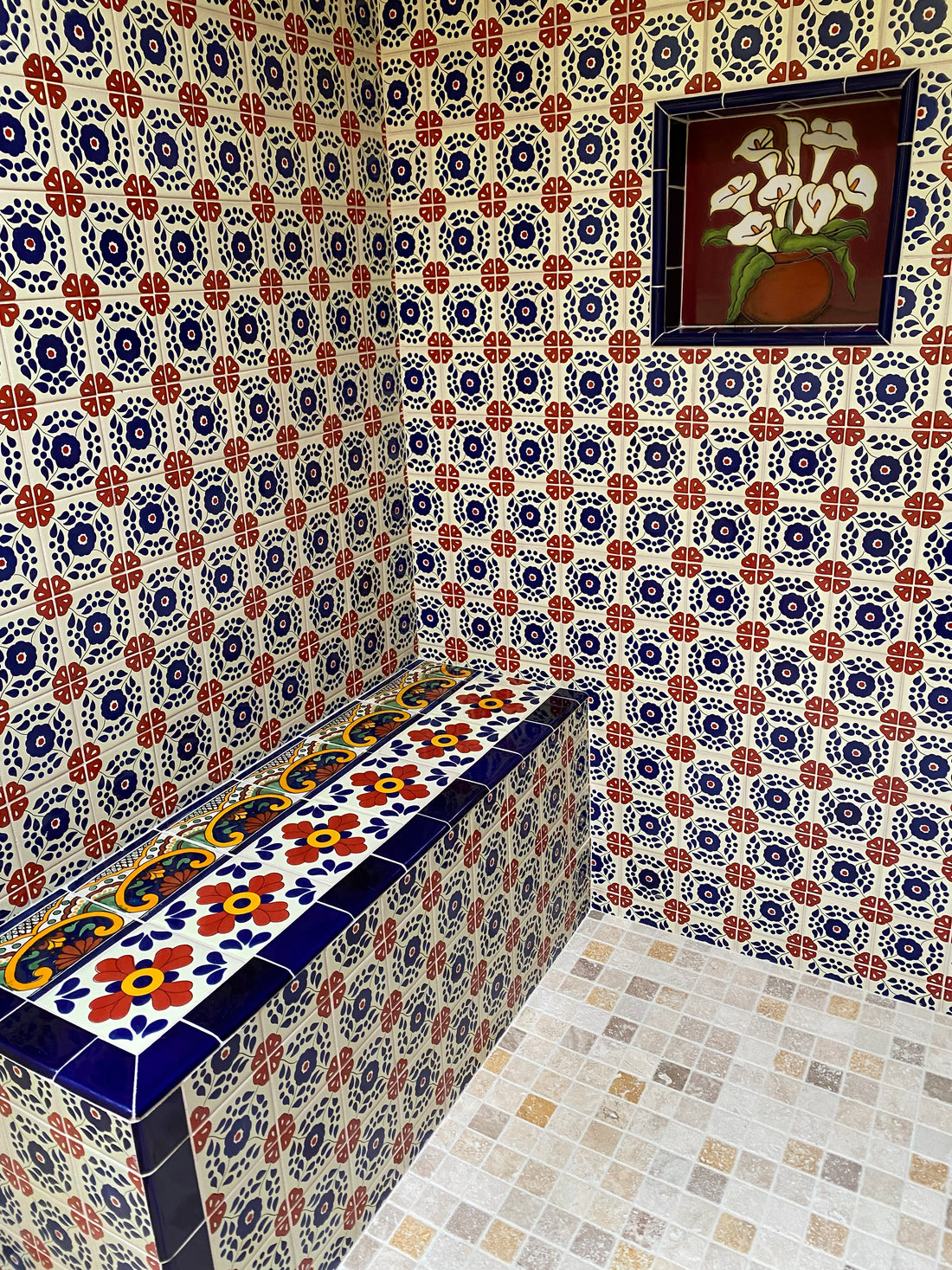
A History: Talavera Tile
Talavera tile is a type of ceramic tile that is known for its intricate designs and bright colors. It has been an important part of Mexican culture for centuries, and it continues to be a popular decorative element in homes and buildings around the world. In this article, we'll explore the history of Talavera tile and how it is made.
History of Talavera Tile
The origins of Talavera tile can be traced back to the 16th century, when Spanish colonizers brought their knowledge of ceramics to Mexico. The city of Talavera de la Reina in Spain was famous for its pottery, and Mexican craftsmen adapted this tradition to create their own unique style of ceramics. The earliest examples of Talavera tile were made in the city of Puebla, which became the center of Talavera production in Mexico.
Talavera tile quickly became a popular decorative element in churches, homes, and public buildings throughout Mexico. The designs on the tiles often featured intricate patterns and vivid colors, and they were used to create stunning decorative murals and panels.
The production of Talavera tile was not without its challenges, however. In the 17th century, the Spanish government imposed strict regulations on the production of Talavera ceramics in Mexico. These regulations required that all Talavera pieces be made using only certain types of clay, and that they be fired at specific temperatures. These regulations helped to maintain the high quality of Talavera ceramics, but they also made the production process more difficult and expensive.
Despite these challenges, the tradition of Talavera tile-making persisted in Mexico. Today, Talavera tile is recognized as an important part of Mexico's cultural heritage, and it continues to be produced by skilled craftsmen using traditional methods.
How Talavera Tile is Made
The process of making Talavera tile is a complex one that requires skilled artisans and specialized equipment. Here's a step-by-step overview of how Talavera tile is made:
Step 1: Preparation of the Clay
The first step in making Talavera tile is to prepare the clay. The clay is usually a mixture of two types of clay: a white clay called "caolin" and a brownish-red clay called "barro." The clay is mixed with water and then kneaded by hand to remove any air bubbles and to create a smooth, uniform texture.
Step 2: Forming the Tiles
Once the clay is prepared, it is rolled out into thin sheets using a rolling pin. The sheets of clay are then cut into the desired size and shape of the tiles using a special tool called a "mold." The tiles are then left to dry for several days.
Step 3: Painting the Tiles
Once the tiles are dry, they are painted with the desired design using a special paint called "engobe." Engobe is a type of liquid clay that is used to create a base layer of color on the tile. The engobe is usually applied using a brush or spray gun.
Step 4: Glazing and Firing the Tiles
After the engobe has dried, the tiles are glazed with a clear or colored glaze. The glaze is a type of liquid glass that is applied to the tile to give it a shiny, durable finish. The glazed tiles are then fired in a kiln at a temperature of around 1000°C (1832°F) for several hours. This process causes the glaze to melt and fuse with the tile, creating a hard, waterproof surface.
Step 5: Inspection and Quality Control
After the tiles have been fired, they are inspected for quality control. The tiles are checked for any cracks, chips, or defects, and any tiles that do not meet the high standards of Talav
era tile are discarded. This ensures that only the highest quality tiles make it to the final stage of production.
Step 6: Decorating and Finishing the Tiles
Once the tiles have been inspected and approved, they are ready for the final stage of production. The tiles may be decorated further using techniques such as hand-painting, stamping, or carving. The edges of the tiles are also smoothed and finished by hand to ensure a perfect fit when installed.
The finished Talavera tiles are now ready to be used in a wide variety of decorative applications. They can be used to create stunning murals, backsplashes, floors, and more.
In Conclusion
Talavera tile is a beautiful and unique form of ceramic tile that has a rich history and tradition. It has been an important part of Mexican culture for centuries, and it continues to be a popular decorative element in homes and buildings around the world. The process of making Talavera tile is a complex one that requires skilled artisans and specialized equipment, but the end result is a stunning work of art that can be enjoyed for generations to come.
Place of Clay specializes in carrying handmade authentic Talavera tile. We import directly from Mexico. Contact us today to learn more.
